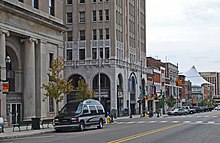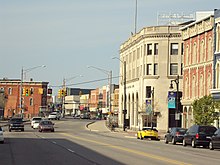Metro Detroit
Metro Detroit is known for its automotive heritage, arts, entertainment, popular music, food, cultural diversity, and sports.The area includes a variety of natural landscapes, parks, and beaches, with a recreational coastline linking the Great Lakes.The Office of Management and Budget (OMB), a federal agency of the United States, defines the Detroit–Warren–Dearborn Metropolitan Statistical Area (MSA) as the six counties of Lapeer, Livingston, Macomb, Oakland, St. Clair, and Wayne.[6] When the nearby Toledo metropolitan area and its commuters are taken into account, the region constitutes a much larger population center.An estimated 46 million people live within a 300-mile (480 km) radius of Detroit proper, including the major metropolitan areas of Chicago, Toronto and Cleveland.Smith said that county residents "just don't yet see ourselves as a natural part of that [Detroit] region, so I think it feels a little forced to a lot of people, and they're scared about it".[8] Detroit and the surrounding region constitute a major center of commerce and global trade, most notably as home to America's 'Big Three' automobile companies: General Motors, Ford, and Chrysler.GM made its initial public offering (IPO) of stock in 2010, after bankruptcy, bailout, and restructuring by the federal government.[20] Domestic automakers reported significant profits in 2010, interpreted by some analysts as the beginning of an industry rebound and an economic recovery for the Detroit area.[31] As the home of the "Big Three" American automakers (General Motors, Ford, and Chrysler), it is the world's traditional automotive center and a key pillar of the U.S.[32][33][34] In the 2010s, the domestic auto industry accounts, directly and indirectly, for one of ten jobs in the United States, making it a significant component for economic recovery.In 2006, the four-day Motown Winter Blast drew a cold weather crowd of about 1.2 million people to Campus Martius Park area downtown.The Refuge includes islands, coastal wetlands, marshes, shoals, and waterfront lands along 48 miles (77 km) of the Detroit River and Western Lake Erie shoreline.The region's leading attraction is The Henry Ford, located in the Detroit suburb of Dearborn; it is America's largest indoor-outdoor museum complex.Some analysts believe that tourism planners have yet to tap the full economic power of the estimated 46 million people who live within a 300-mile (480-km) radius of Detroit.Later came an influx of persons of British and German descent, followed by Polish, Irish, Italian, Lebanese, Assyrian, Greek, Jewish, Maltese, and Belgian immigrants who made their way to the area in the early 20th century and during and after World War II.[56] In Wayne County, the city of Dearborn has a large concentration of Arab Americans, mainly Shi'ite Muslim Lebanese, whose ancestors immigrated here in the early 20th century.African Americans have also moved to the suburbs: in 2000 44% of the more than 240,000 suburban blacks lived in Inkster, Pontiac, Oak Park, and Southfield.The Metro Detroit area is linked by an advanced network of major roads and freeways which include Interstate highways.The 313 area code, which used to encompass all of Southeast Michigan, is today confined exclusively to the City of Detroit and several neighboring Wayne County suburbs.
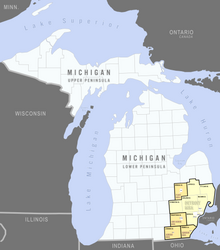
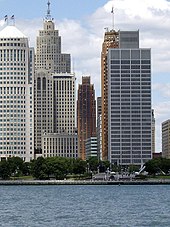
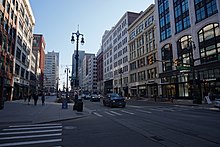

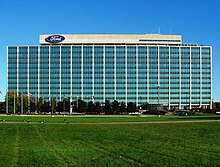

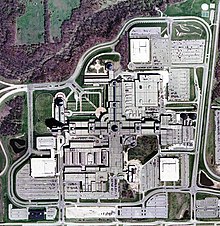
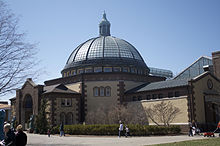
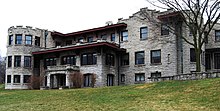


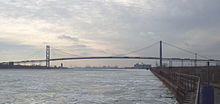
Combined Statistical AreaDowntown DetroitWindsor, OntarioCity of DetroitMetropolitan DivisionMichiganDetroitLapeerLivingstonMacombOaklandSt. ClairGeneseeLenaweeMonroeWashtenawTime zoneUTC−5UTC−4Area code(s)metropolitan areasurrounding areaOffice of Management and BudgetGreat LakesFortune 500Michigan census statistical areas8mm footageUrban Area12th most populous2020 census2010 censusMetropolitan Statistical AreacountiesPontiacMt. ClemensHowellPort HuronWayne CountyOakland CountyMacomb CountyMount ClemensLivingston CountySt. Clair CountyLapeer CountyAnn ArborLenawee CountyDetroit-Warren-Dearborn, MI Metropolitan Statistical AreaFlint, MI Metropolitan Statistical AreaGenesee CountyAnn Arbor, MI Metropolitan Statistical AreaWashtenaw CountyMonroe, MI Metropolitan Statistical AreaMonroe CountyAdrian, MI Micropolitan Statistical AreaDetroit–Windsor areaToledo metropolitan areaChicagoTorontoClevelandGreat Lakes MegalopolisThe Ann Arbor NewsEconomy of metropolitan DetroitList of companies based in MichiganDetroit Financial DistrictDetroit River'Big Three' automobile companiesGeneral MotorsChryslerGross Metropolitan Product (GMP)Woodward AvenuePontiac Commercial Historic DistrictMilitary Road Historic Districtemerging technologiesbiotechnologynanotechnologyinformation technologyhydrogen fuel cellCasino gamingCaesars WindsorMGM Grand DetroitMotorCity CasinoHollywood CasinoDetroit–Windsorinitial public offering (IPO)bankruptcybailoutrestructuring by the federal governmentautomotive industryResearch & developmentengineeringBig ThreeRenaissance CenterUnited States Army TACOM Life Cycle Management CommandSelfridge Air National Guard BaseDetroit Metropolitan AirportAuburn HillsborderUniversity of MichiganWayne State UniversitySouthfield Town CenterNew CenterFisher BuildingCadillac PlaceBorgWarnerRocket MortgageAlly FinancialCarharttShinolaGoogleHP Enterprise ServicesFord Motor CompanyDearbornArchitecture of metropolitan DetroitTourism in metropolitan DetroitDetroit ZooWoodward Dream CruiseNorth American International Auto ShowYoumaconWindsor-Detroit International Freedom Festival2009 NCAA Final FourSuper Bowl XLDetroit International RiverfrontCampus Martius ParkmetroparksMetropolitan BeachKensington Beach
